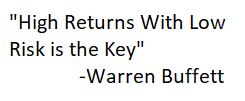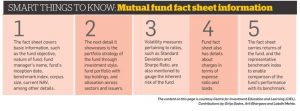Investors who are unable to handle asset allocation and rebalancing themselves and are of conservative bent may opt for multi-asset funds
It’s unsettling times in the stock market. Rattled retail investors are looking at ways to remain invested without adding on risks. Yet others are too lazy to track the market and act accordingly. Both need a safe option where asset allocation and rebalancing are taken care of by experts. The solution lies in multi-asset funds.
WHAT ARE THEY?
Multi-asset funds are all-in-one funds that give you exposure to three asset classes: equity, debt and gold. The typical fund in this category is conservative in nature with high exposure to debt (50-90%), and some exposure to equities (up to 40%) and gold (up to 30%). Some funds in this category are also equity-oriented with small exposure to debt and gold while some have nearly equal weightage to all the three categories.
WHY ARE THEY A GOOD BET?
One advantage of multi-asset funds is that they offer diversification.Since they are diversified over three asset classes–equities, debt and gold–these funds tend to be less volatile and investors enjoy a smooth ride over the long term.
Second, asset allocation and rebalancing, which lie at the very heart of financial planning, are taken care of by an expert–the fund manager.
“In a country like India, where financial literacy is low, many retail investors may not have the knowledge and discipline to carry out asset allocation and rebalancing themselves, in which case they should allow an expert to handle these tasks,“ says Lakshmi Iyer, Chief Investment Officer (Debt), Kotak Asset Management Company.
Multi-asset funds also protect you from certain costs. If while rebalancing you need to sell an asset, especially debt or gold, you become liable to taxation. Sometimes you may also have to pay an exit load. By investing in multi-asset funds, you avoid these costs.
WHAT ARE THE PITFALLS?
Since multi-asset funds are blended products, their returns will always be lower than that of the best-performing asset class of the day–a price that investors have to pay for the lower volatility in these funds.
Sometimes, multi-asset funds have a fund-of-funds structure. In that case, the mother fund will only invest in the funds belonging to the same fund house. “You are deprived of the opportunity to choose the best funds from across fund houses,“ says Vidya Bala, Head of Research, Fundsindia.com. Many of the multi-asset funds have a high exposure to gold–some going as high as 35%.
Most financial planners suggest an allocation to gold in a retail investor’s portfolio of only 5-10%. Gold is an asset class that has very long cycles: both bull and bear runs can last for as long as a decade in some cases.At present, gold is witnessing a bear run. The retur ns of multi-asset funds could suffer for a long time due to the high exposure to gold.
At present multi-asset funds in India do not give you exposure to international funds, a category to which the well-to-do retail investor should have some exposure (up to 15%).
In India multi-asset funds lack a long-term track record. Only one fund has a five-year track record. The corpus size of individual funds is also limited. Investors who are uncomfortable investing in funds with a short track record or limited corpus size may be reluctant to invest in this category currently.
WHAT SHOULD YOU DO?
When choosing a fund from the multi-asset category, go with one whose asset allocation is in sync with your risk profile and investment horizon.Conservative investors, for instance, should not invest in a fund with high equity exposure.
Your investment horizon in these funds should be at least five years.Only when you have invested across market cycles will the benefit of rebalancing be reflected in portfolio returns.
Don’t compare the retur ns of these funds with the best-performing category of the day. Compare it with the weighted average return of its benchmark indexes. “In the long run, these funds should be able to give returns in high single digit or low double digits,“ says Vishal Dhawan, Chief Financial Planner, Plan Ahead Wealth Advisors.
Check the expense ratios of all the funds in this category, as there is considerable variance here. Avoid investing in very small-sized funds.If the corpus size does not increase, there is a risk that the fund house may close down the fund.
Finally, you may perhaps be dissuaded from investing in these funds after seeing the single-digit threeyear returns of many of the funds in this category (see table). Remember that these are conservative, lowrisk products. Over the long term, owing to their composition and the better tax treatment that debt-oriented funds enjoy, these funds should outperform bank fixed deposits and Post Office Schemes.
Investors with a high risk appetite, or knowledgeable ones who can manage asset allocation and rebalancing themselves, may avoid these funds.


